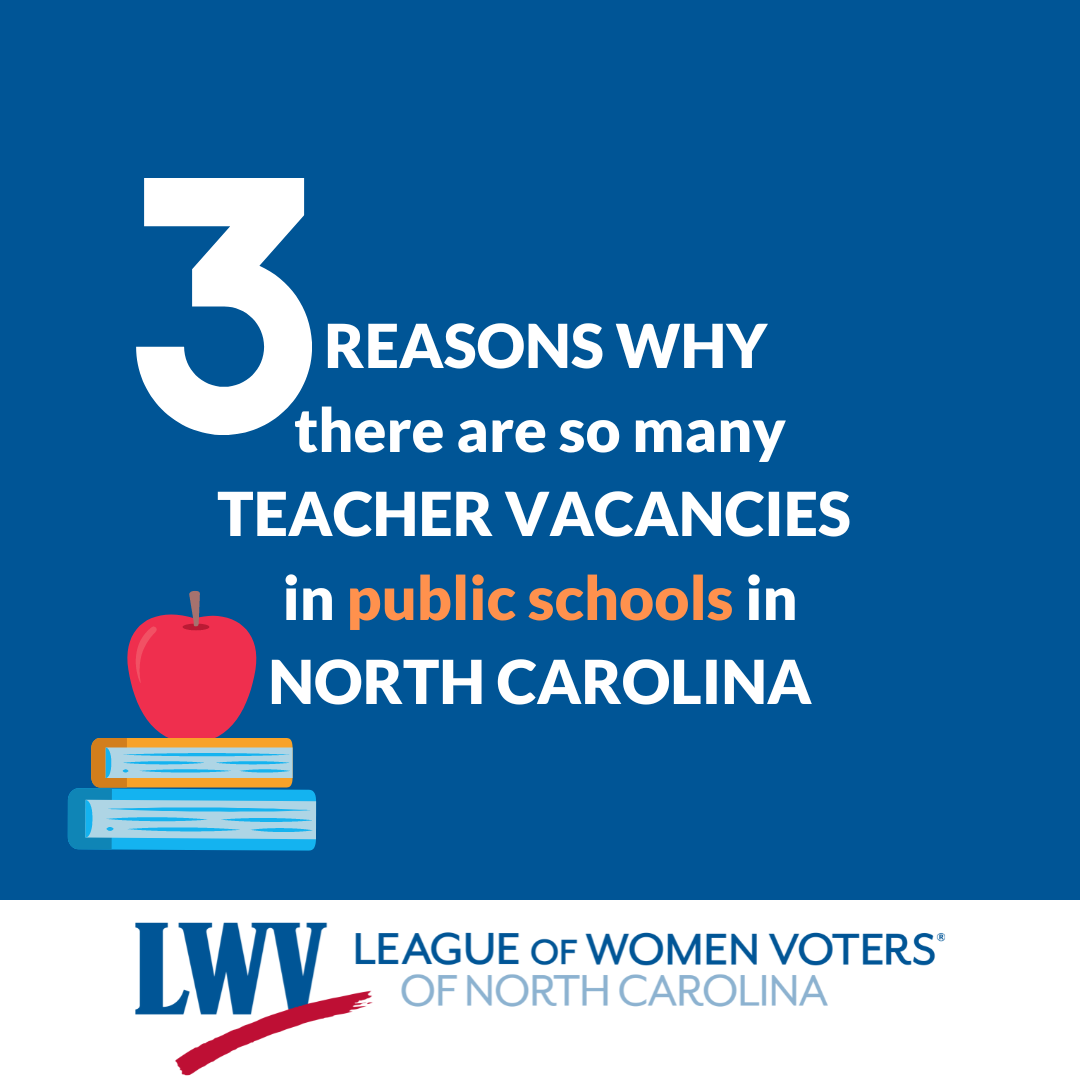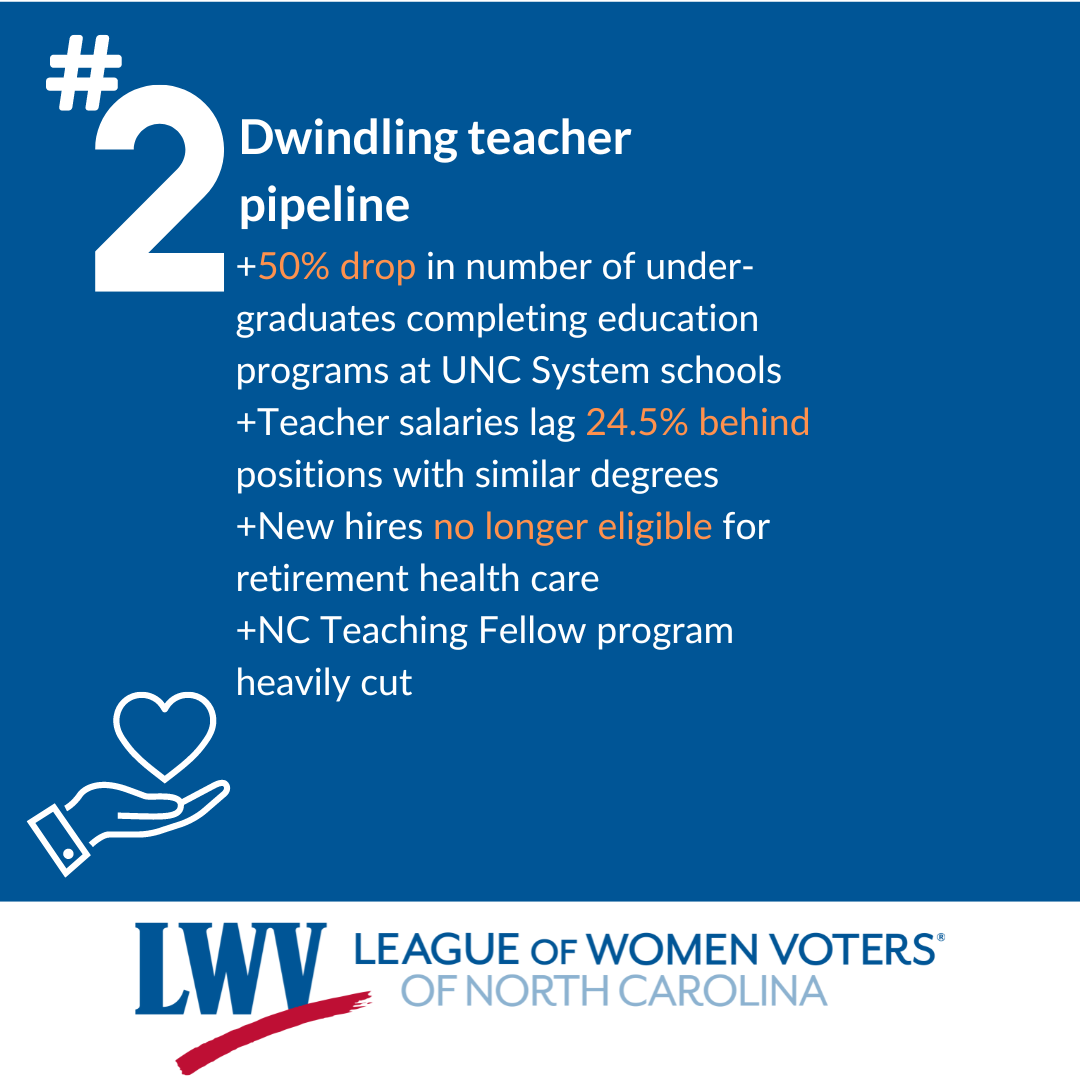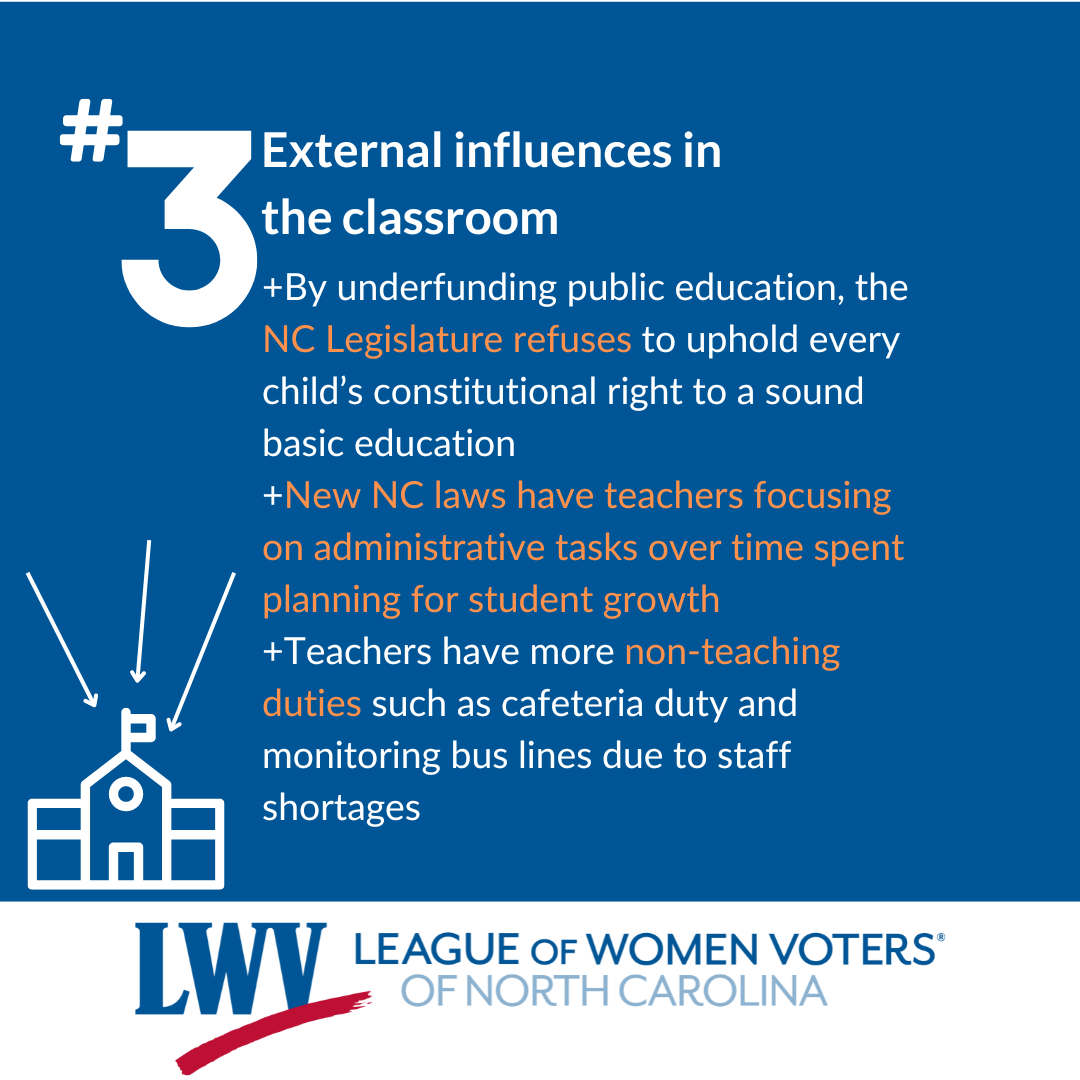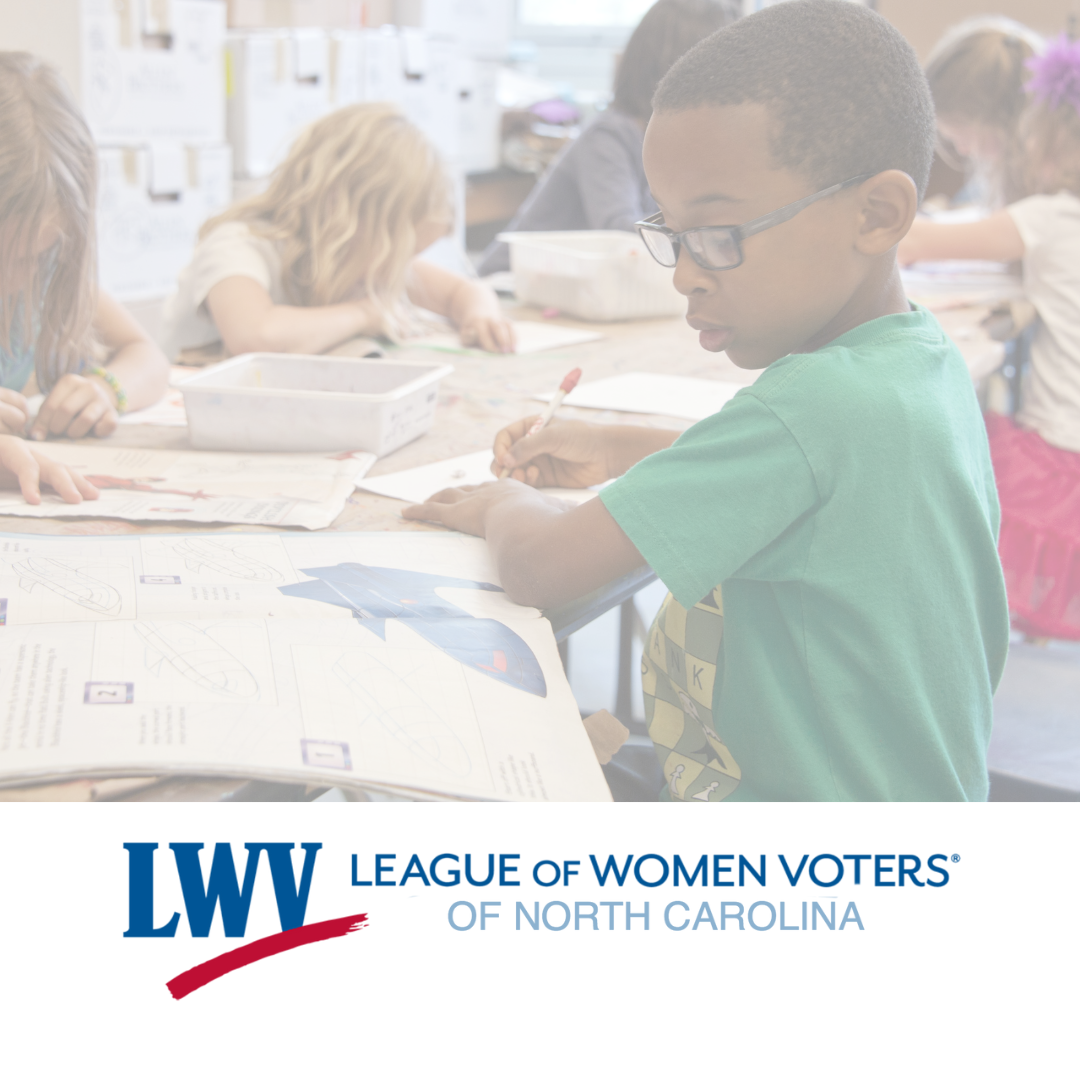
Chairs: Jeanne Smith & Lucy Bond
Monthly Zoom meetings, 3rd Wednesdays at 5:30 pm
communications [at] lwvnc.org (
)
Be a public school advocate!
We need leaders who support public education – a foundation of our democracy. There is a crisis in our public schools, caused by a severe teacher shortage, a lack of funding by legislators, and insufficient childcare. These problems impact everyone in our state.
The goal of the Public Education League Action Team is to help the public be informed and committed public school voters. We want citizens to understand the issues and share their knowledge with others in their community via social media and letters to the editor of local newspapers. We can work together with allied organizations to amplify the importance of supporting our public schools.
Ask your elected officials: What is your position on public education? Address them at town halls, in community meetings, and through letters/emails/calls.
Use elected officials’ voting records where officials stand. Legislators’ records are easily found on the General Assembly website. Email us at communications [at] lwvnc.org if you'd like to get involved with our LAT.
2025 LWVNC Public Education Resources (View/Download)
NC Tax Policy Fails Public Education
Opportunity Scholarships (Vouchers)
NC Education Lottery – FY2024 Summary
The Value of Public Education in North Carolina
![]() El Valor de la Educación Pública en Carolina del Norte
El Valor de la Educación Pública en Carolina del Norte
Elected Officials Who Impact Public Education
![]() Funcionarios Electos Que Impactan la Educación Pública
Funcionarios Electos Que Impactan la Educación Pública
![]() Public Education Palm Card (Spanish)
Public Education Palm Card (Spanish)
LWVNC Public Education Resources Citations
Oct. 8 Zoom on the Economic Power of NC Public Education
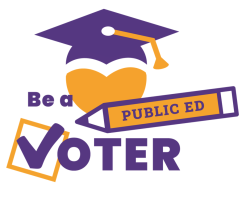
Frequently Asked Questions
Why do public schools matter? The state constitution provides for a unified, public statewide system – free and open to all children. The schools offer the tools to academic and social success. They prepare students for college and produce future leaders. Our schools also unite us, bringing people from diverse communities together to learn and work as a unit.
How do public schools impact our local communities?
- Most students in K-12 attend public schools. Overall, it’s 84% in North Carolina – 77% in traditional schools and 7% in charter schools. In many counties, this number is higher – 89% or more – especially in rural counties.
- The school systems are tied to the economic health of the county. Ranked as the largest employer in 35 counties; first or second largest employer in 66 counties; and first, second, or third in 82 counties.
- Local businesses need educated, skilled employees. Public schools go beyond the traditional subjects to include technical and career education, often working with community colleges or workforce development programs.
- When a corporation is considering setting up shop in North Carolina, leaders look at the public schools before criteria such as corporate taxes. In addition, the schools act as a community hub, providing opportunities for people to come together.
Who is responsible for public education policy and funding? The state government. This is different from most other school systems across the nation. The state determines the curriculum and school personnel. It’s responsible for funding to make this happen. The counties are responsible for school buildings and facilities. The counties also provide supplemental funding for materials and salaries. The federal government provides funding for school nutrition programs and offers additional support to special populations, such as students with disabilities. The typical funding: 65% provided by the state, 25% provided by the county, and 10% by the federal government.
How does N.C. measure up?
- North Carolina lags behind most states in funding. We are 49th in funding effort, which is a measure of funding in terms of state wealth. We are 48th in funding level, which accounts for state and local funds used for student per-pupil allotments. We are 38th in teacher pay. We are 38th in teacher salaries (overall) and 42nd in terms of beginner teacher salaries.
- The average teacher salary does not provide a living wage for teachers. Teachers make 25% less than other employees with a similar level of education.
- In 2024, 10% of the 90,000 teachers left N.C. classrooms. This shows that we are underfunding public education.
- Funding as a percentage of the state budget has steadily declined. In the 1970s, it was 55%; in 2024, it was 39%.
Who makes decisions about public education policy and funding? Many public officials have an impact – learn more about how this breaks down. Therefore, when voting, it is crucial to know each candidate’s position on our schools.
What are some of the current issues in our state? These are tumultuous times. The impact of Covid is still felt. The most important factor of student success is having a well-qualified teacher in the classroom. Yet, teacher vacancies are at an all-time high. This is due to experienced teachers leaving the field, and a low number of new teachers coming into the fold due to inadequate salaries, extra teaching responsibilities, additional administrative duties, and a climate of distrust. Chronic underfunding by the state is a huge issue. There is insufficient support for children with special needs – with disabilities, from low-income families, English learners. There are insufficient early childhood education resources. Another issue? Recent laws that emphasize social issues versus student achievement and opportunities. The huge expansion of private school vouchers has shown that the state funds are available, but the General Assembly is choosing to fund private schools with very limited accountability rather than our public schools. The current tax policy fails to deliver the revenue needed for public education and so lacks the investment needed to educate the next generation of North Carolina public school students.
